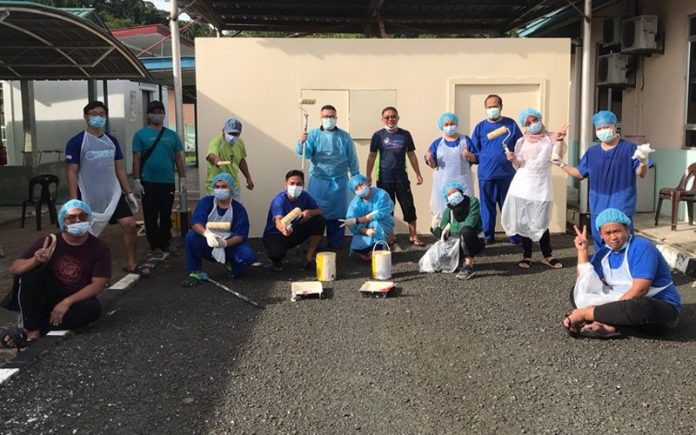
PETALING JAYA: When Beluran was first hit with cases of Covid-19 in September, the local hospital there – like many other small district hospitals in Sabah – found itself in a fix. It lacked the necessary facilities to isolate the patients.
The hospital is an aging one. Some 60% to 70% of the building are the same structures put up when the hospital was first built decades ago, and it only had 50 beds in total.
Local volunteer Lina Ramsah, the founder of local NGO Beluran Hope, saw this as an opportunity to help. She went on Twitter to crowdfund for an isolation ward in the small village district, raising RM22,000 from the public and organisations.
“An isolation room is a necessity, and the Beluran Hospital just did not have enough space to isolate Covid-19 patients from the others,” said the 39-year-old homemaker with a vision.
With the help of donors and a team of volunteers, and also staff from the Beluran Hospital, she started building the ward, consisting of four rooms in total.
It took them two weeks to finish construction, completing it as the district faced an increasingly dire situation with Covid-19 suddenly getting worse after the Sabah state election in September.
“We built an isolation room and a screening room for pregnant mothers. We also prepared a room for the doctors and nurses to change into their Personal Protective Equipment (PPE). There was also a room to carry out swab tests and a filing storage room for outside patients.”
The money she raised was enough to build a 30ft x 12ft PPE changing room. “The filing centre is 16ft x 14ft. It can fit six to 10 people. We also built a 90ft x 10ft maternity isolation room for pregnant mothers suspected of Covid-19.”

The maternity ward in particular was an important facility, she said, because Beluran’s one-storey hospital building had only one room to house pregnant women. This made it a challenge to isolate pregnant patients from the Covid-19 patients.
Thanks to her project, Beluran was ready when it turned into a redzone. There were more than four or five pregnant Covid-19 patients using the maternity wards at any given time.
Lina’s work has really taken off in Beluran. Even after her project was completed, she said, many other NGOs and private individuals still continue to help people on the ground till this day.
“After the project was completed, I had to add an air conditioning unit inside because it’s too hot for the mothers,” said Lina.
Lina, who said there was just not enough resources for the management of Covid-19 in the area, also spoke of villagers and residents affected by movement restrictions suffering from a shortage of food supplies.
“The government does provide food assistance but not all get them, as there are just too many people affected.
“The government should cooperate with civil society to lighten the load of people working on the ground. They must work together with those on charity missions. Political sentiments must be set aside.”

Meanwhile, a healthcare worker who wished to remain anonymous also confirmed that the Beluran Hospital was lacking the necessary infrastructure for the management of Covid-19 patients from the district.
“Of course, with old buildings, when Covid-19 cases rise, we faced a major problem here. We could not place suspected Covid-19 patients away from the other patients.
“There are a lot of limitations. We do not have a dedicated building… So, in the early days, we just used canvas drapes as dividers for makeshift isolation wards. It was still unsafe, because of the tight space.”
At the time, he said, the hospital needed a separate facility to place Covid-19 patients before they are transported to the Sandakan Hospital, about two hours away, as per the protocol set by the health ministry.
“We also needed a room where we could take test samples of suspected patients. So, we also faced a big problem there,” he said.


